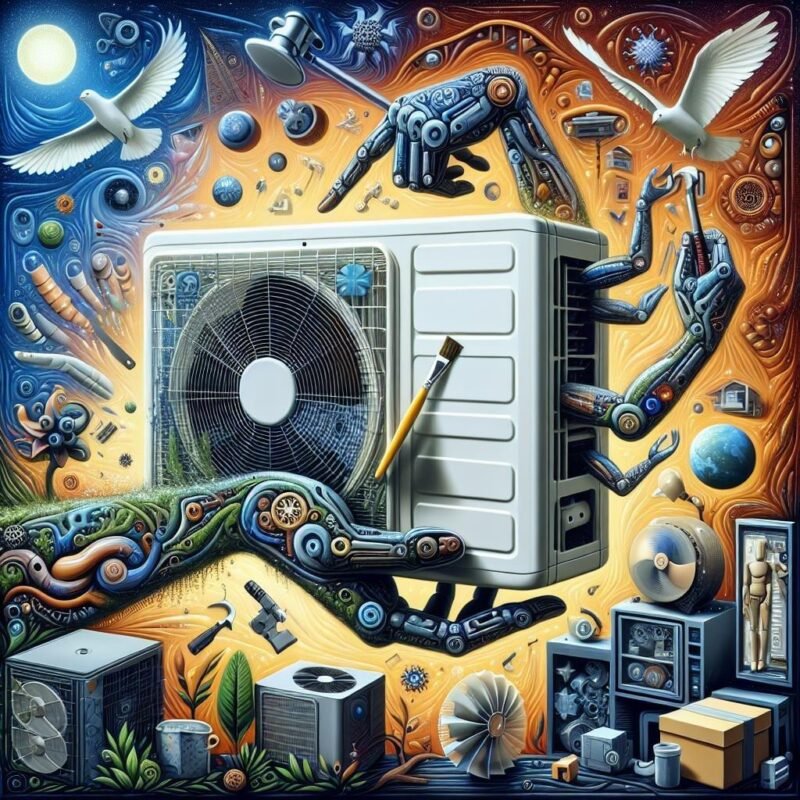Do mini split AC systems qualify for energy efficiency tax credits?

As energy bills continue to soar and climate concerns take center stage, homeowners are getting creative wiht their cooling solutions. Enter the mini split AC system – that sleek, whisper-quiet marvel that’s been turning heads in the HVAC world. But here’s the million-dollar question (or at least the tax credit question): Could your investment in this energy-saving superhero actually put some extra cash back in your pocket come tax season? If you’ve been eyeing those stylish indoor units while dreaming of both a cooler home and a warmer wallet, you’re in for some exciting news.
Understanding Mini Split Tax Credits: Your Guide to Energy-Smart Savings
Navigating the world of energy efficiency incentives can feel like decoding a complex puzzle,but when it comes to mini split systems,the rewards are crystal clear.These innovative heating and cooling solutions often qualify for considerable federal tax credits, putting more money back in your pocket while helping Mother Earth. Recent legislation has sweetened the deal, offering homeowners up to 30% of the total installation costs, with maximum credits varying based on your system’s specifications and installation timing.
Beyond federal incentives, a patchwork of state and local programs creates even more opportunities for savvy homeowners to maximize their savings. Let’s break down the available incentives:
- Federal tax credits through the Energy Efficient Home Improvement Credit
- State-specific rebate programs
- Utility company incentives
- manufacturer rebates
| Credit Type | Potential Savings | Requirements |
|---|---|---|
| Federal Tax Credit | Up to 30% | ENERGY STAR® certified |
| State Rebates | $500-$2,000 | varies by location |
| Utility Rewards | $100-$1,000 | Local provider terms |
qualifying Features That Make Your Mini Split System Tax Credit Worthy
not every mini split heat pump system automatically qualifies for energy incentives. To unlock those valuable tax credits,your ductless system needs to meet specific efficiency standards established by ENERGY STAR®. The minimum requirements include a SEER2 rating of 15.2 or higher for cooling performance and a HSPF2 rating of 7.5 or above for heating capabilities.Additionally, the equipment must be installed by certified professionals who follow proper protocols and provide documentation.
Beyond the basic efficiency metrics, qualifying systems must also include these key features:
- Variable-speed compressor technology
- Advanced inverter-driven operation
- Multi-zone capability (2-8 indoor units)
- Smart home integration compatibility
- Built-in humidity control
| System Type | Min SEER2 | Min HSPF2 |
|---|---|---|
| Single Zone | 15.2 | 7.5 |
| Multi Zone | 15.2 | 7.8 |
Breaking Down Energy Efficiency Ratings and Credit Requirements
To snag those sweet tax credits for your mini split AC, you’ll need to pay close attention to specific performance metrics. The Seasonal Energy Efficiency Ratio (SEER2) and Heating Seasonal Performance Factor (HSPF2) are the magic numbers that determine eligibility. For 2023, your system must achieve a minimum SEER2 rating of 16 and HSPF2 rating of 8.5 to qualify for the enticing 30% tax credit under the inflation Reduction Act.
Let’s dive into the qualifying criteria that can put money back in your pocket:
- Must be ENERGY STAR® certified
- Installation should be completed by December 31, 2032
- Maximum credit value of $2,000 per year
- Primary residence installations only
| Credit Type | Efficiency Requirements | Maximum Credit |
|---|---|---|
| Standard Credit | SEER2 ≥ 16 | $600 |
| High-Efficiency Credit | SEER2 ≥ 18 | $2,000 |
Smart Installation Tips to Maximize Your Mini Split Tax Benefits
Get ready to make the most of your tax benefits by following these expert-proven installation strategies. Professional placement and positioning of your mini split components play a crucial role in maximizing energy efficiency. Position outdoor units away from direct sunlight and ensure proper airflow clearance. Indoor air handlers should be mounted high on walls,ideally 6-7 feet from the floor,avoiding heat sources and windows that receive intense sunlight.
Documentation is your best friend when claiming tax credits. Keep detailed records of:
- AHRI certification numbers
- Manufacturer’s certification statement
- Professional installation receipts
- Energy performance ratings
- Product specifications
| installation Feature | Tax Benefit Impact |
|---|---|
| Professional Installation | 100% Eligible |
| DIY Installation | Equipment Only |
| Multi-Zone Setup | Higher Credit Value |
Q&A
Q&A: Do Mini Split AC Systems Qualify for Energy Efficiency Tax Credits?
Q1: What exactly is a mini split AC system?
A1: Great question! A mini split AC system is a type of air conditioning unit that provides versatility and efficiency. it consists of an indoor unit and an outdoor compressor, allowing you to cool or heat individual rooms or areas in your home. Plus, it’s ductless, which means no messy installation involving ductwork!
Q2: I’ve heard about energy efficiency tax credits. What are thay?
A2: Energy efficiency tax credits are incentives provided by the government for homeowners and businesses that purchase energy-efficient appliances and systems, including heating and cooling units. These credits help offset the cost of investment while promoting environmentally pleasant choices.
Q3: So, do mini split AC systems actually qualify for these tax credits?
A3: Yes! Mini split systems can qualify for energy efficiency tax credits, but there are a few caveats. The american tax code offers credits for HVAC systems that meet specific efficiency ratings. Always check if your mini split meets the required Energy Efficiency Ratio (EER) or Seasonal Energy Efficiency Ratio (SEER) specifications.Q4: What qualifies a mini split for these credits?
A4: To get your mini split system in the running for credits, you’ll want to look for models that typically have a SEER rating of 15 or higher.Some high-efficiency models may even qualify for rebates or state-level incentives, so do your homework and ask your HVAC professional!
Q5: How do I find out if I’m eligible for these tax credits?
A5: The frist step is to check the IRS website or speak with a tax professional. They can provide tailored advice based on the latest tax laws. some mini split models even come with documentation stating their efficiency ratings, making it easier to prove eligibility.
Q6: Is there a specific limit to how much I can claim?
A6: While some tax credits do have limits, the amount you can claim varies by the year and the type of system you install. It’s essential to stay updated on current tax legislation to know the maximum benefits you can receive.
Q7: Are there any additional benefits to installing a mini split system?
A7: Absolutely! Beyond tax credits, mini splits offer meaningful energy savings over traditional systems, improved air quality, and the luxury of zoning, allowing you to control the temperature in different rooms. It’s a win-win for your comfort and the surroundings!
Q8: Any final tips for homeowners considering a mini split system?
A8: Plan, plan, plan! Do your research to find the best mini split model that meets your needs and efficiency standards. Consult with licensed professionals who can guide you through the proper installation and help determine eligibility for tax credits. And most importantly, enjoy the cool breeze that comes with your efficient choice!
Remember, taking the step to install a mini split AC system can provide long-term benefits-not just for your comfort but for your wallet and the planet, too! Cheers to being cool and environmentally savvy!
In Retrospect
As we bid adieu to our exploration of mini split AC systems and their eligibility for energy efficiency tax credits, we hope you now feel enlightened and empowered to make informed decisions for your home cooling needs.Embracing energy-efficient technology not only helps you stay pleasant during summer’s soaring temperatures but also makes a positive impact on both your wallet and the planet.
If you’re considering a mini split system, remember that not only do they whisper sweet nothings of comfort into your living space, they may also usher in delightful savings when tax season rolls around. Be sure to keep an eye out for local incentives and consult with a tax professional to unlock all the potential benefits.
As you venture into your decision-making journey,remember: investing in energy efficiency is not just a choice; it’s a nod to a enduring future. So go ahead, take that leap, and may your home be a sanctuary of cool, fresh air and savings galore! Until next time, happy cooling!






















